The book, The Scent of Yesterday is US-based Jaya Kamlani's nostalgic look at Mahim of the ’50s and ’60s. Kamlani's sepia toned portrait of her Sindhi immigrant family, which fled bloodshed in Pakistan during Partition to come to the city, is a picture of working-class Mumbai

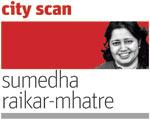 St. Michael's Church, positioned at the intersection of Lady Jamshetji Road and Mahim Causeway, is one of the oldest Portuguese buildings in Mumbai.
St. Michael's Church, positioned at the intersection of Lady Jamshetji Road and Mahim Causeway, is one of the oldest Portuguese buildings in Mumbai.
ADVERTISEMENT
While the famous picture of Virgin Mary remains one of its key attractions, it is etched in the popular consciousness for its nine consecutive Wednesday Novenas, for which adherents of all faiths throng the church in the hope of wish fulfillment.
This Catholic Church, dating back to 16th century, is a recurring character in the recently-released memoir Scent of Yesterday by US-based writer Jaya Kamlani.
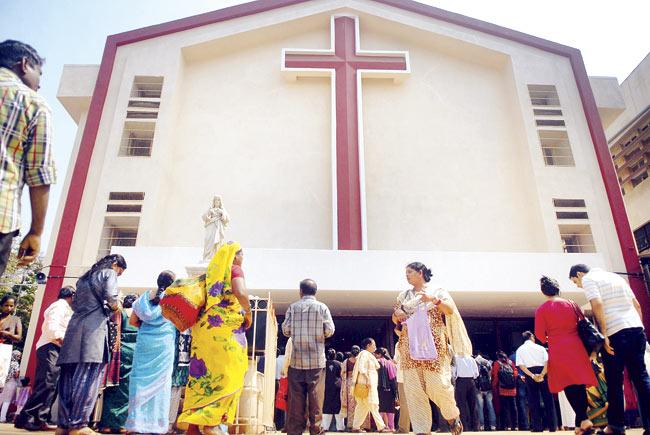
St Michael's Church is more about faith and belief in Mahim
Along with the church, several other Mahim landmarks come to life in the 260 paged memoir. The Canossa Convent High School, Victoria High School, Paradise Bakery, Shalimar Restaurant and Mahim Station. The memoir, set in the 1950s and 1960s, reawakens niche experiences that today's technologically-advanced Mumbai is no longer privy to.
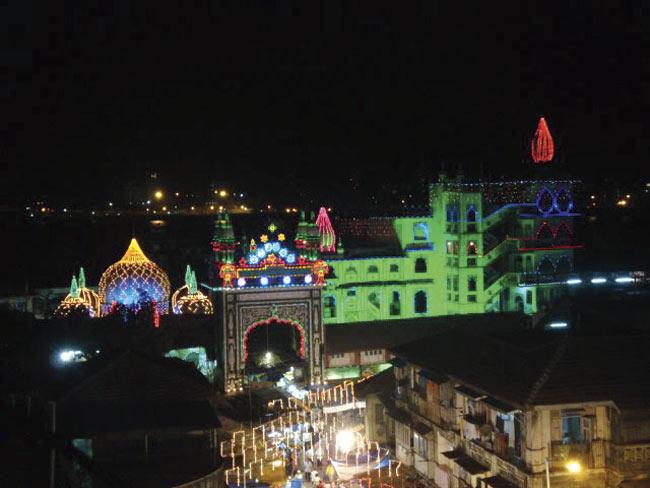
Mahim Dargah lit up for Eid
Buying ice slabs on the doorstep is not an experience for the refrigerator-owning Mumbaikar. A summer vacation without a television could be termed a farcical thought. The Scent of Yesterday accommodates many such treasures that characterised the city's humble working class past.
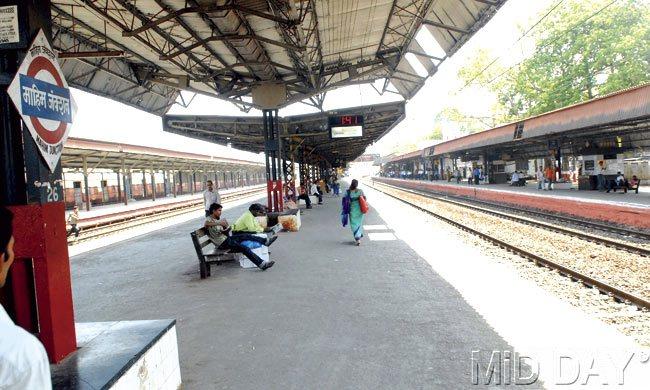
Mahim Station, a window to the world of erstwhile Bombay. Pic/Sayed Sameer Abedi
Vanilla Childhood
Kamlani's childhood years were replete with joys that are inaccessible and inconceivable in contemporary Mumbai. The third floor balcony of her Ram Mahal building (facing Mahim Railway Station) was the window to the outside world, from the time she was five-year-old 'Baby' of the Mirchandani household. Her father was usually away on overseas assignments and her mother ran a family of eight on modest means.

Jaya Kamlani is an Indian-American author, with two books to her credit. She migrated to the US in 1969. The first, To India, With Tough Love calls for social change and an end to human rights abuse. She currently serves on the Board of Directors for Atlanta: City of Peace, Inc. (ACP) in Georgia. She is an English Literature graduate from St Xavier's College, Mumbai
Baby recalls endless hours spent in the balcony, gazing at commuters emerging from the rail station. The variety of Mumbaikars she surveyed was amazing. On an average day, she could see gypsy groups doing their balancing acts, fire eaters jumping through hoops and children playing cricket on Tulsi Pipe Road. Her concentration was often broken by the snake charmers who played the flute to mesmerise cobras in their wicker basket.
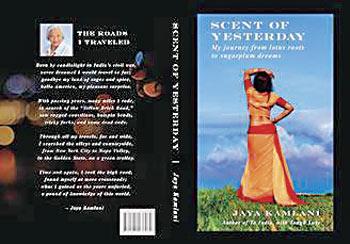
Scent of Yesterday, book jacket
Her elder brother Mangha often bicycled (later motor cycled) on the road. His motorcycle race to Ruia College is a defining moment; indicative of the quality of road life in Mahim. It stands in sharp contrast with today's Mahim where mobility is severely restricted due to the traffic bottlenecks on most roads and arterial streets.
To School
The Scent of Yesterday has various accounts of Baby's everyday walk to school. This is an experience that few children enjoy in today's traffic-ridden, security-conscious Mumbai. Baby could walk her way to the school, first few years in Victoria School and later at Canossa.
That walk was also another way of exploring the neighbourhood. It was a collective activity, which encouraged interaction with the neighbourhood.
A Frugal World
Life in 12, Ram Mahal was relaxed but not equipped with modern amenities. Labour was affordable which explained the live-in-cook, and other service givers like barbers, gola vendors and the razai-pillow carders whose carding instrument (dhunki) had a distinctive twang.
(This twang was a common daytime sound in Mumbai apartments which sought seasonal renewal of cotton-stuffed pillows). Rose water and sliced watermelon were summer delights, ice cream an occasional treat; aerated drinks unheard of. Water was filtered through a muslin cloth and stored in earthen pots. The family had no telephone; the pay phone in the building lobby was reserved for urgent communication.
No oven, no food processor graced the kitchen; most grinding tasks were manually managed. Grocery and milk were available on a government ration card. Food was cooked thrice a day, and milk purchased twice as there was no refrigerator. Making whipped butter from milk was a chore assigned to Baby.
Each family member contributed in some way towards running a functional kitchen. The cook of course took on the major share ranging from jobs like taking wheat to the mill or carrying cooked meals to nearby shanty dwellers.
Waxing Etiquette
The waxing session is one of the most interesting episodes. Once Baby reached the 10th grade, she was told by her elder brother Kiku to clean the hair off her arms and legs. She wrote a letter to Femina, asking for advice on waxing. Kiku helped her draft the letter.
The magazine recommended using hot wax from Bellezaa. Once the wax arrived by mail, a collective reading of the user instructions followed. On a chosen Sunday, the wax was heated to the recommended temperature. Mummy cut old cloth into makeshift strips.
With Baby seated on the edge of the bed, Kiku spread the warm wax with an applicator on her legs. He pulled the strip ("swooooosh") after 20 minutes. When Baby expressed displeasure, Kiku said, "pain was the price for looking good."
Real Estate
Baby grew up in pre-consumerist Mumbai where spas, parlours and rejuvenating beauty treatments were not within reach. Real estate prices were within the reach of an immigrant family, which chose Mahim as their new home. They had abandoned their old mansion in Sindh (Pakistan) on a fatal, riot-torn day after Partition.
Mahim meant a lot to the family because of the torturous 13 months that they faced before getting to Ram Mahal. The Mirchandanis escaped Sindh in the wake of looting and mass murder of Hindus.
After spending a few months in Jodhpur, they shifted to Baroda, which was also chaotic after Mahatma Gandhi's assassination. They moved to Deolali, an army camp town and finally landed in Bombay in October 1948. After spending a year in a fishing village (Koliwada), they accepted Mahim as their rightful residence.
New Beginnings
Life in Mahim had its share of problems. There were mosquitoes, water-borne infections; monsoon flooding was a perennial feature. But for every problem, the city offered a solution. As other industrious middle-class families, Baby's family found ways to cope.
As a displaced family, the Mirchandanis knew how to improvise and make do with the available resources. They lived Spartan lives, after father's untimely retirement.
They had to borrow money to fend for education. But the city protected their lives at different crisis moments. Even when Pakistani warplanes flew over the city in 1965, Mumbai seemed a safe place. The then Bombay, was on high military alert; curfew imposed from dusk to dawn.
As news of Pakistani troops entering Kashmir hit airwaves, paranoia spread. Kamal and Baby masked the windows with dark opaque paper, as per blackout orders. Dinner was served in fading daylight, extra food was stocked.
A single kerosene lamp guided Ram Mahal through the night. Before bedtime, the family gathered in Mangha's room for wartime news on the radio. The night ritual lasted seven weeks until the war ended and Bombay was back to normal.
Metro Music
The Scent of Yesterday has abundant cultural references to Western music that Bombay was exposed to in the 1960s. The writer's inclination for vintage tunes therefore has an interesting genesis. Her musical ear was shaped by her brother Mangha's Radio Ceylon preference.
They devoted Sunday mornings to Binaca Hit Parade which meant two hours of Top-40 Western hits. Family members also spent considerable time listening to gramophone records. When the mechanical arm of the gramophone created a cranking noise, an unintended music gave rise to much humour for the Mirchandanis.
Initially, Baby was not allowed to go to discos or weekend jam sessions. But as she entered college, Baby was awarded the freedom her brothers enjoyed. They danced to music by the Beatles and Rolling Stones. Once during a youth social event, Baby did the cha-cha dance to the Baby Elephant Walk.
She rocked all night and won a dance prize, which was two cans of condensed milk! The incident speaks of the social mores of the times. Music, Western and Indian, stayed with the author, even after she left Mumbai to study advertising in New York.
It helped her sail through tough circumstances (as a mother and a professional) in an alien land. Very often, somber Bollywood numbers would unknowingly come to her lips, particularly when she missed India.
At a crucial point in her career (when she had to care for her children and manage a demanding job), she listened to: "Asoo bhari hai yeh jeevan ki rahen…" Brushing aside nostalgia, she internalised the irony of the moment.
Mumbai's embrace
The Scent of Yesterday underlines Mumbai's secular spirit. The author is clearly in awe of the multi-hued humanity that inhabited the legendary city.
The book deals with Baby's exchanges with Canossa Convent nuns, servants from different backgrounds, friends who belonged to different castes and religions.
Baby also, attended Wednesday Novenas and was ready to celebrate Diwali in the same spirit. She spoke three languages and could understand many more.
It is obvious from the account that no other Indian city could have prepared Baby better for her later life in America. The teeming colliding diversity in Mumbai's life shaped Baby's coping mechanism in the US.
Worth Preserving
Unfortunately, Kamlani's book lacks judicious copy editing. Her sentence structure is convoluted. Her chatty, informal style often lacks finesse, due to which the account is marred by syntactical imprecision.
While chapters are neatly divided, use of inept idioms confuses the reader. The chapters on Kamlani's stay in the US are better sculpted than the ones which focus on her Mahim days.
However, the quality of the lived experience reaches the reader despite the flaws. The lack of slickness in presentation does not rob the narrative of its intrinsic worth.
Lucid prose and an inspiring production design of course could have done better service to a bygone era which undoubtedly deserves a recount.
Cities Within
Mumbai has so far inspired multi-hued narratives which paint and project the city in different lights. The city has coaxed writers to explore its underbelly and offers an insider's view of its criminal netherworld. Bollywood, Mumbai's exotic nightlife and dance bars have thrown open another wide canvas.
Mumbai's slums have played muse to many; while its street food flavours have given rise to many fables. Westerners passing through the city have been motivated to put down their transformative sojourns.
The city has been a grand chaotic backdrop for many love stories; its chawl dwellings have immortalised resonant literary characters. In this context of past literary works stemming from the Mumbai experience, Jaya Kamlani's Scent of Yesterday is an honest portrayal of middle-class Mumbai.
It is the story of a refugee family which sought solace in the opportunities provided by a pluralistic fabled metropolis which absorbed people irrespective of caste, class, religion and gender.
Most importantly, it is homage to the religio-cultural diversity of Mahim, which houses St. Michael's Church, Mahim Dargah and Sitaladevi Temple within a radius of a few kilometres.
The writer is a Mumbai-based cultural chronicler.
 Subscribe today by clicking the link and stay updated with the latest news!" Click here!
Subscribe today by clicking the link and stay updated with the latest news!" Click here!






